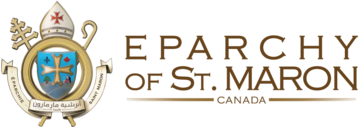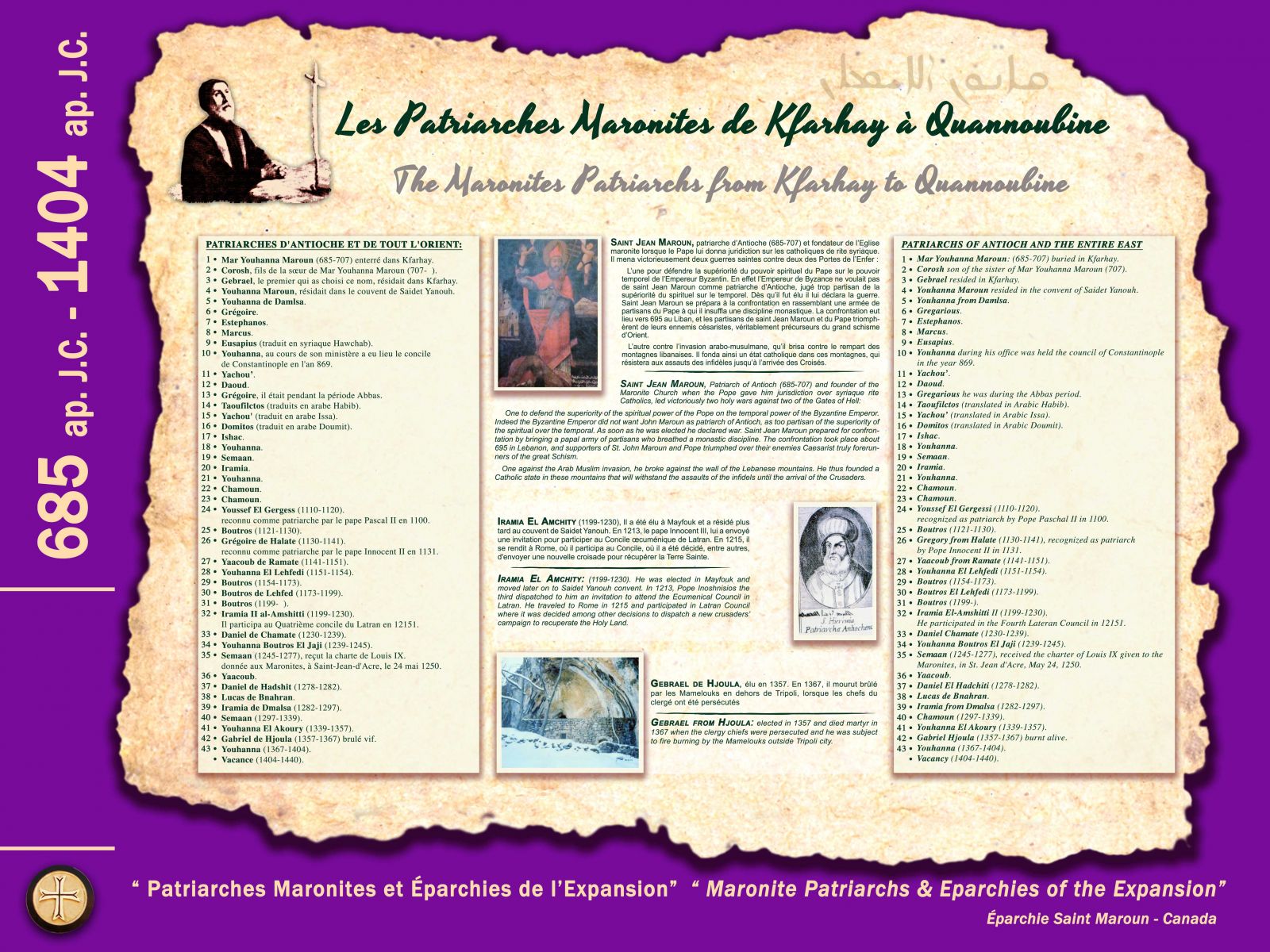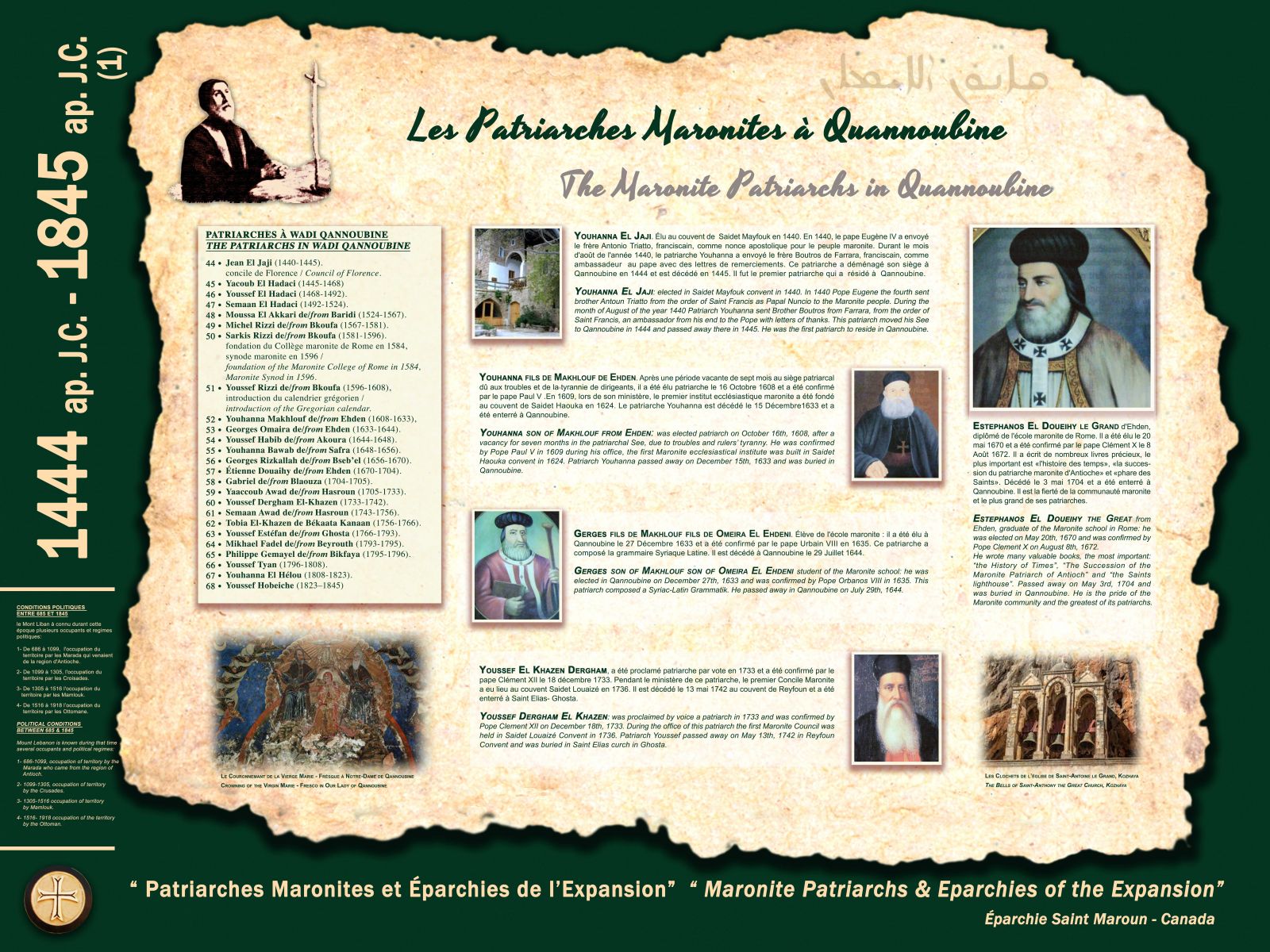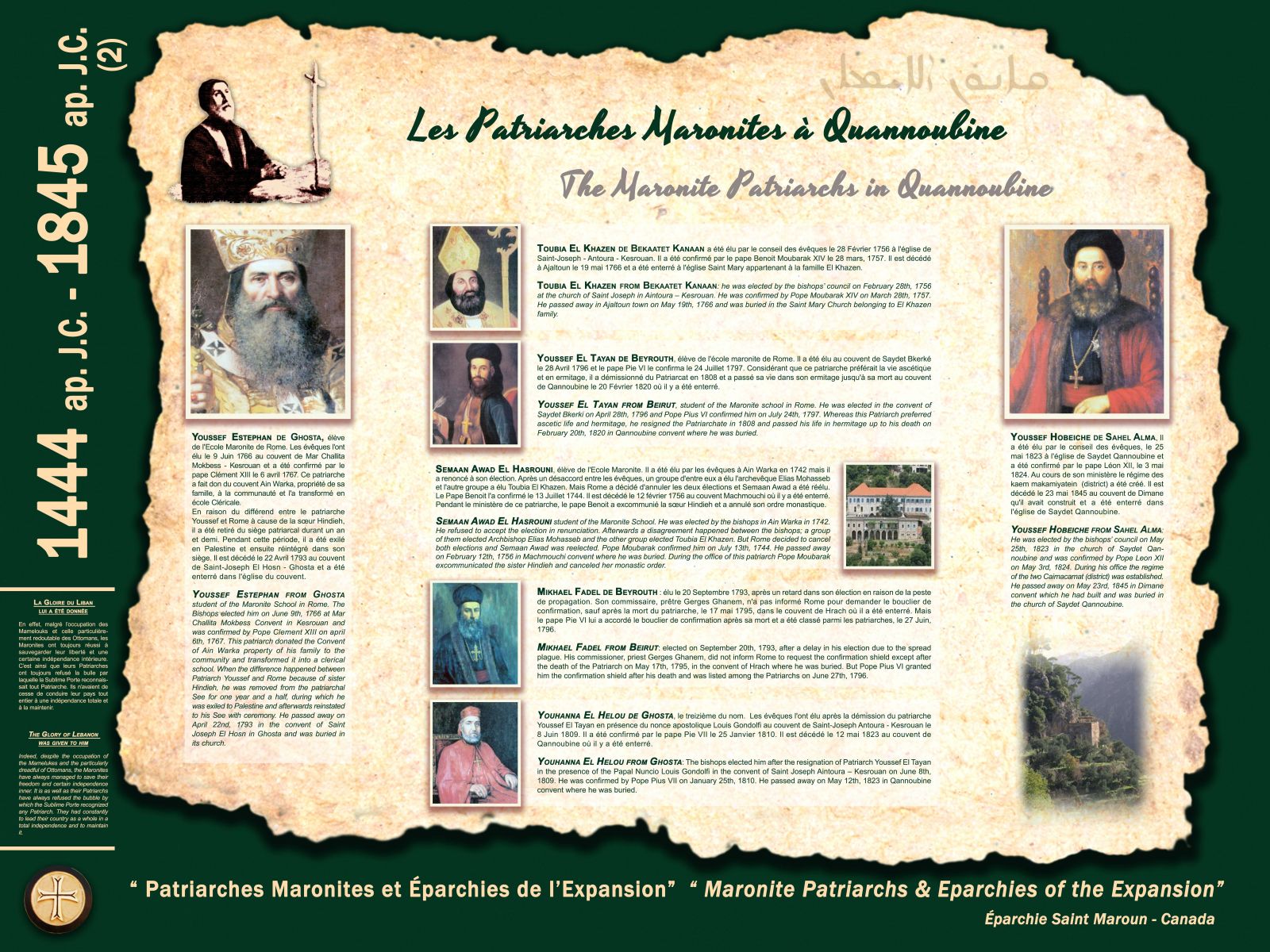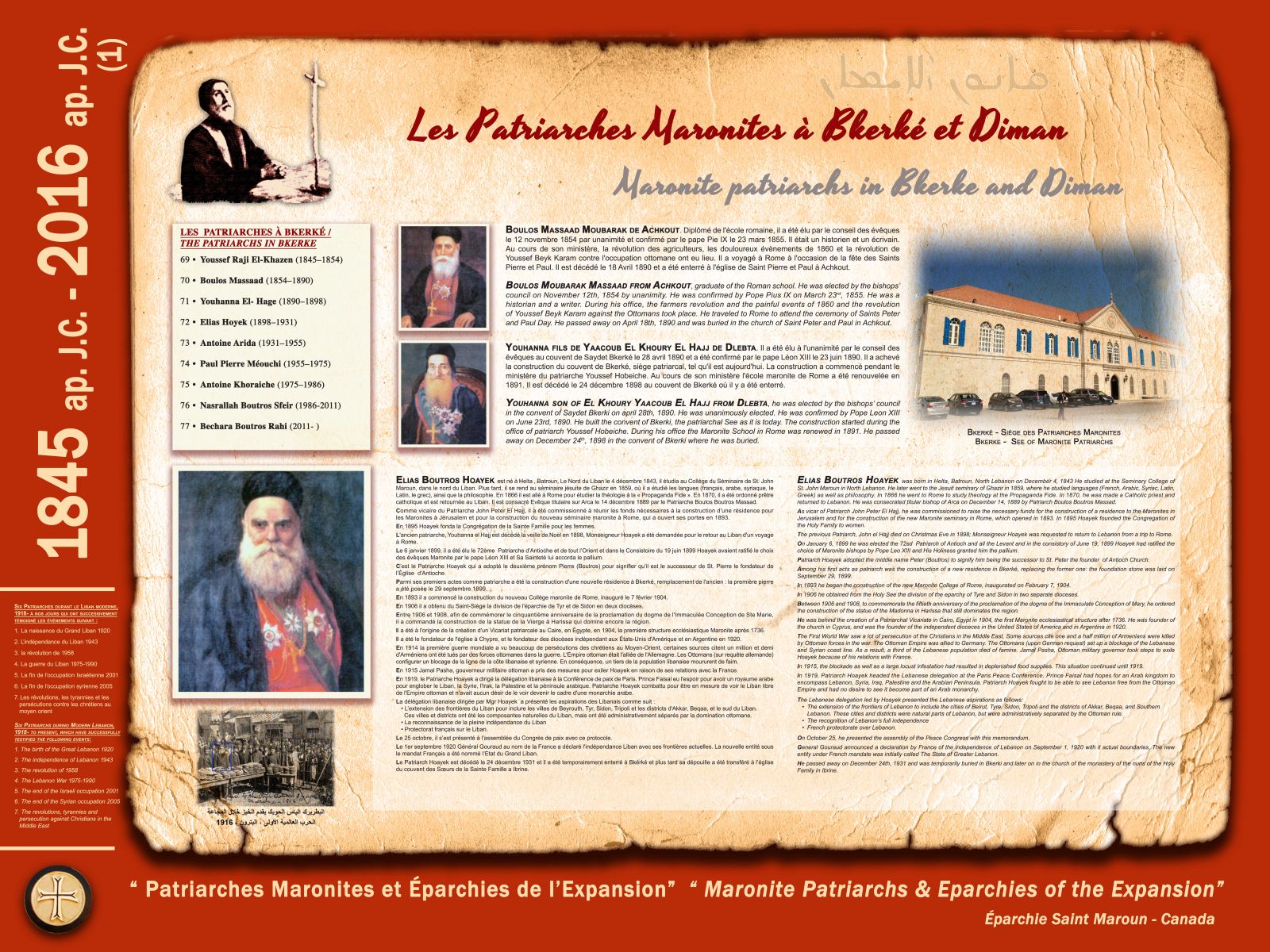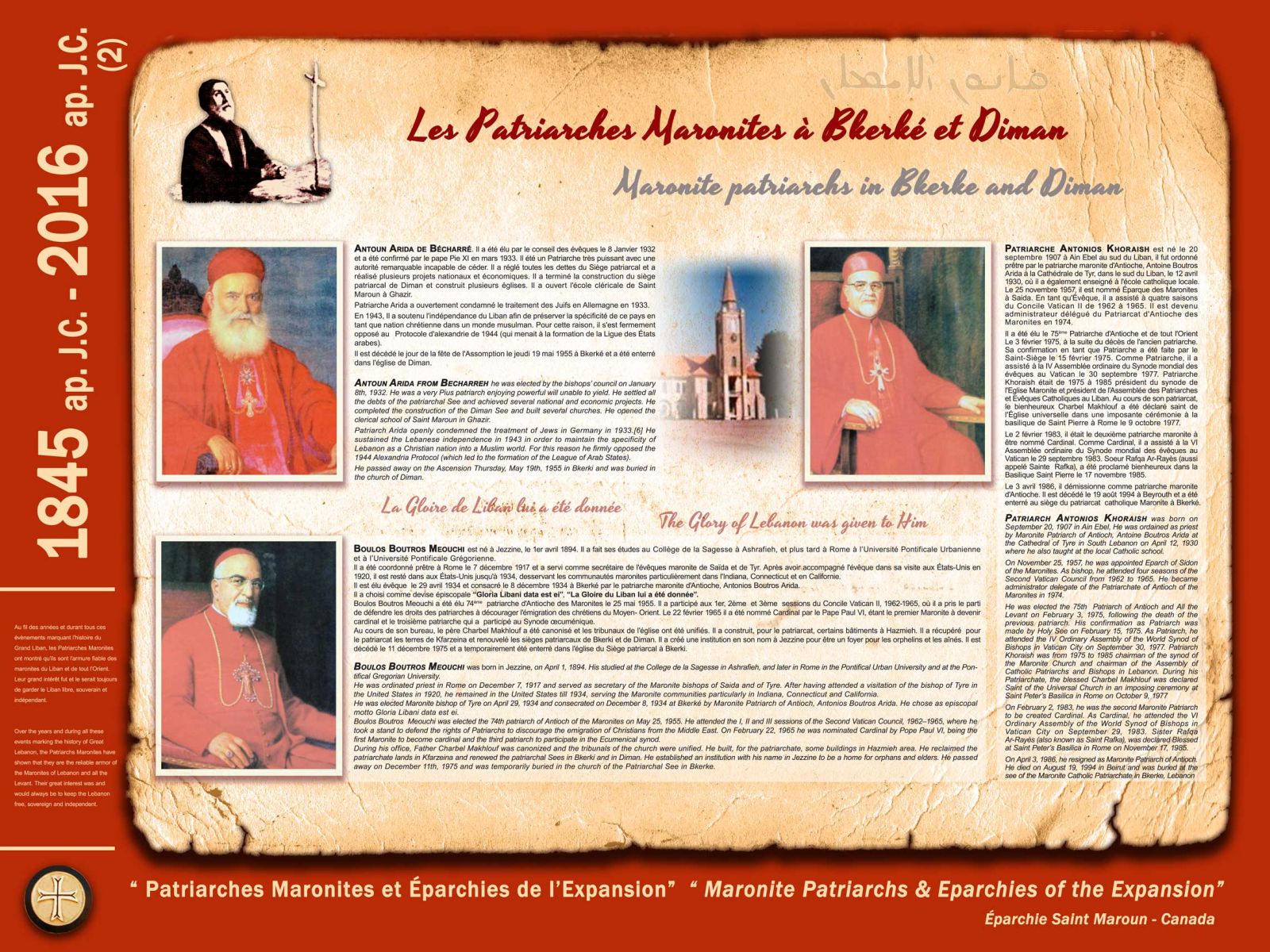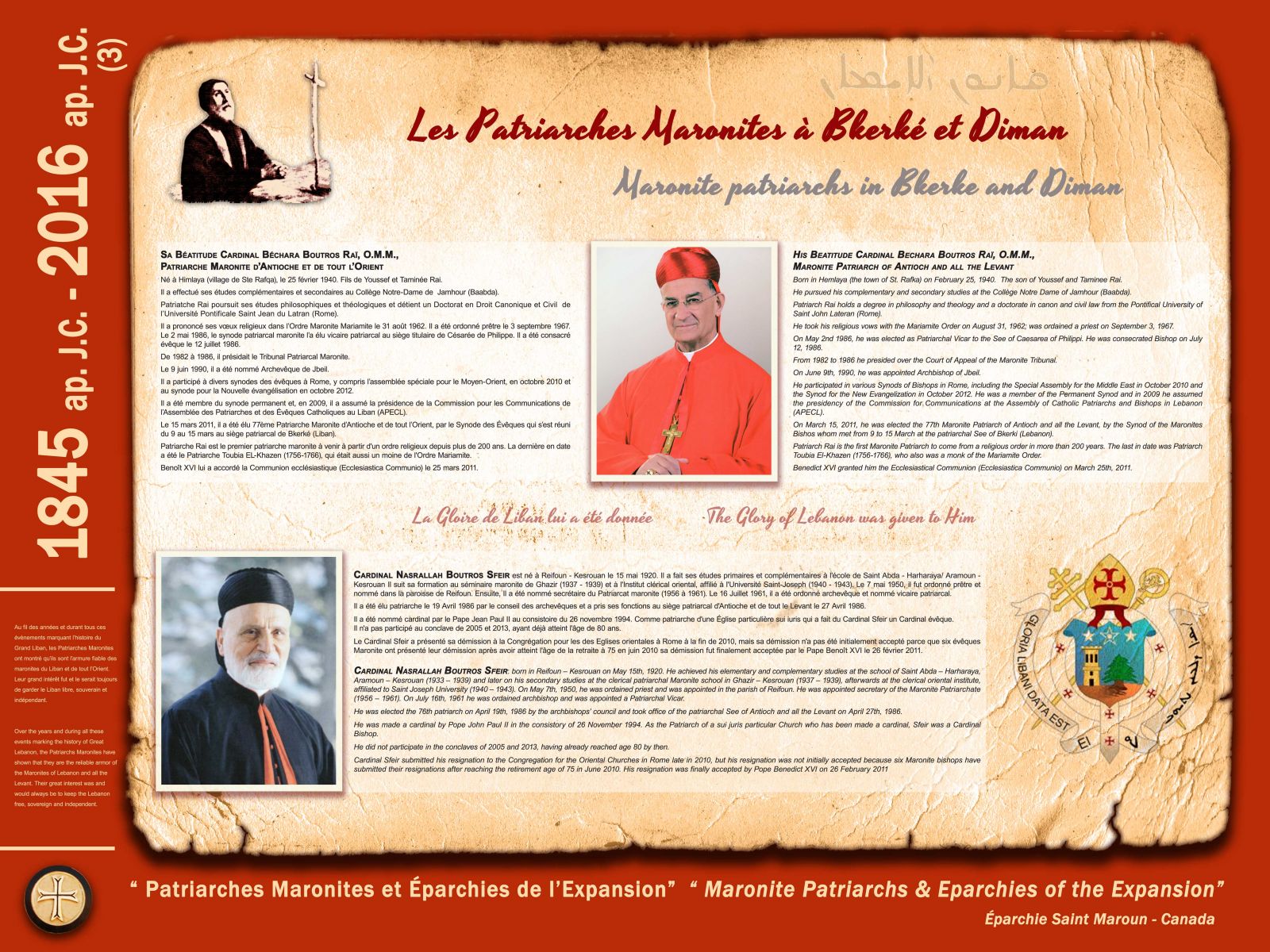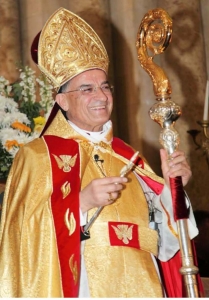707AD,Saint John Maron died and was buried at St. Maron monastery in Kfarhaï (Batroun Region). In the Maronite calendar, he is remembered on March 2nd. He was the founder of the Maronite hierarchy, be it the first Patriarch. He didn’t limit himself to his role as a religious leader, but was also the father of the Maronite entity and especially its guide on the political, national and military fronts. Thus, Lebanon was recognized as the homeland of the Maronites headed by Patriarch John Maron.
List of Maronite Patriarchs in chronological order
The Patriarchs who served in the region of Byblos between 938 and 1440:
Jean-Maron the second, Jean de Dmalsa, Grégoire, Étienne, Marc, Eusèbe, Jean Jésoua, David, Grégoire, Théofélix, Jésoua, Doumit, Isaac, Jean, Siméon, Youssef El Gergess (1110-1120), Pierre (1121- 1130), Grégoire de Halat (1130-1141), Jacob de Ramate (1141-1151), Jean (1151-1154), Pierre (1154-1173), Pierre de Lehfed (1173-1199), Jérémie de Amchit (1199-1230 ), Daniel de Chamate (1230-1239), Jean de Jaje (1239-1245), Siméon (1245-1277), Daniel de Hadchit (1278-1282), Jérémie de Dmalsa (1282-1297), Siméon (1297-1339 ), Jean (1339-1357), Gabriel de Hjoula (1357-1367), Jean (1367-1404), Jean de Jaje (1404-1445).
The Patriarchs who served in the Quannoubine Valley from 1440 to 1823:
Jean de Jaje (1404-1445), Yacoub de Hadath (1445-1468), Joseph de Hadath (1468-1492), Siméon de Hadath (1492-1524), Moussa Akkari de Baridi (1524-1567), Michel Rizzi de Bkoufa (1567-1581), SarkisRizzi de Bkoufa (1581-1596), Joseph Rizzi de Bkoufa (1596-1608), Jean Makhloufd’Ehden (1608-1633), Georges Omairad’Ehden (1633-1644), Joseph Halib de Akoura (1644-1648), Jean Bawab de Safra (1648-1656), George Rizkallah de Bseb’el (1656-1670), Etienne Douaihy d’Ehden (1670-1704), Gabriel de Blaouza (1704-1705), Yaccob de Hasroun (1705-1733), Joseph DerghamKhazen de Ghosta (1733-1742), Simeon Awad de Hasroun (1743-1756), Tobia (Toubia?) El Khazen de BekaataKanaan (1756-1766), Joseph Etienne de Ghosta (1766-1793), Michel Fadel de Beirut (1793-1795), Philippe Gemayel de Bikfaya (1795-1796), Youssef Tyan de Beytouth (1796-1808), Jean Helou de Ghosta (1808-1823).
The Patriarchs who served during the summer in Diman and during the winter in Bkerké from 1823 to the present:
Youssef Hobeiche de Sahel Alma (1823-1845), Youssef Raji El Khazen de Ajaltoun (1845-1854), Boulos Massaad de Achkout (1854-1890), Jean Hage de Dlebta (1890-1898), Elias Hoyaek de Helta (1898- 1931), Antoine Arida de Bsharri (1931-1955), Paul Meouchi de Jezzine (1955-1975), Antoine Khoreiche de AinEbel (1975-1986), Nasrallah Sfeir Raifoun (1986-2011) and Bechara Boutros El-Raï (2011-present).
If Saint John Maron is rightly regarded as the first of our Patriarchs, it is due to the fact that he was the first to leave the seat of Antioch. He first took refuge at the St. MaronMonastery in Syria that housed eight hundred monks. The Byzantine army pursued him, destroyed the monastery and all the surrounding Maronite villages. He then headed for Lebanon where he managed to transfer the miraculous skull of Saint Maron. He took up residence in Kfarhaï – Batroun where the Byzantine army continued its pursuit against him and the Maronites. The latter inflicted a decisive defeat to the Byzantinearmy which lost its two famous generalsMaurice and Mauricianos.
Saint John Maron died in the year 707AD and was buried at St. Maron monastery in Kfarhaï. In the Maronite calendar, he is celebrated on March 2. He was the founder of the Maronite hierarchy. He didn’t limit himself to his role as a religious leader, but was also the father of the Maronite entity and especially its guide on the political, national and military fronts. Thus, Lebanon was recognized as the homeland of the Maronites headed by Patriarch John Maron and after him his successors.
